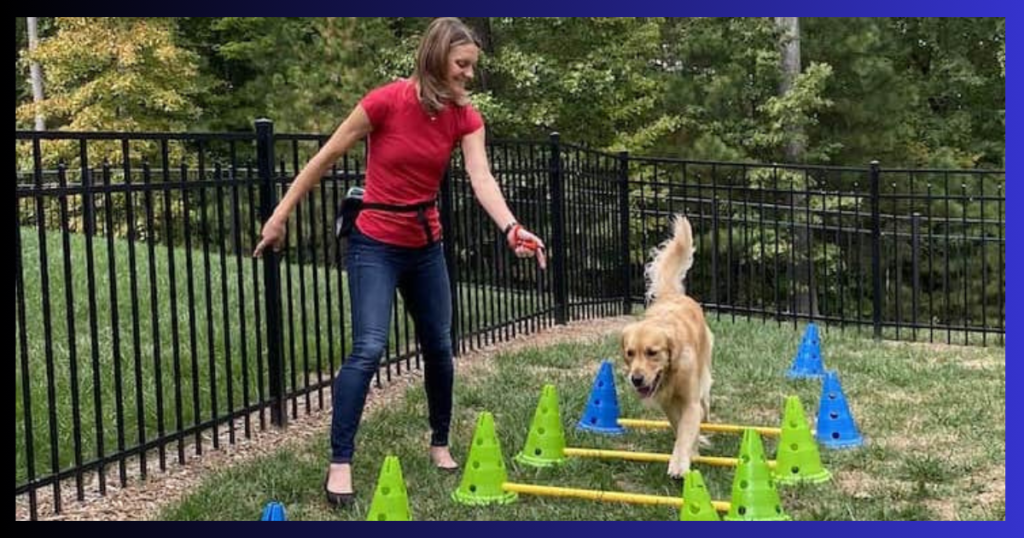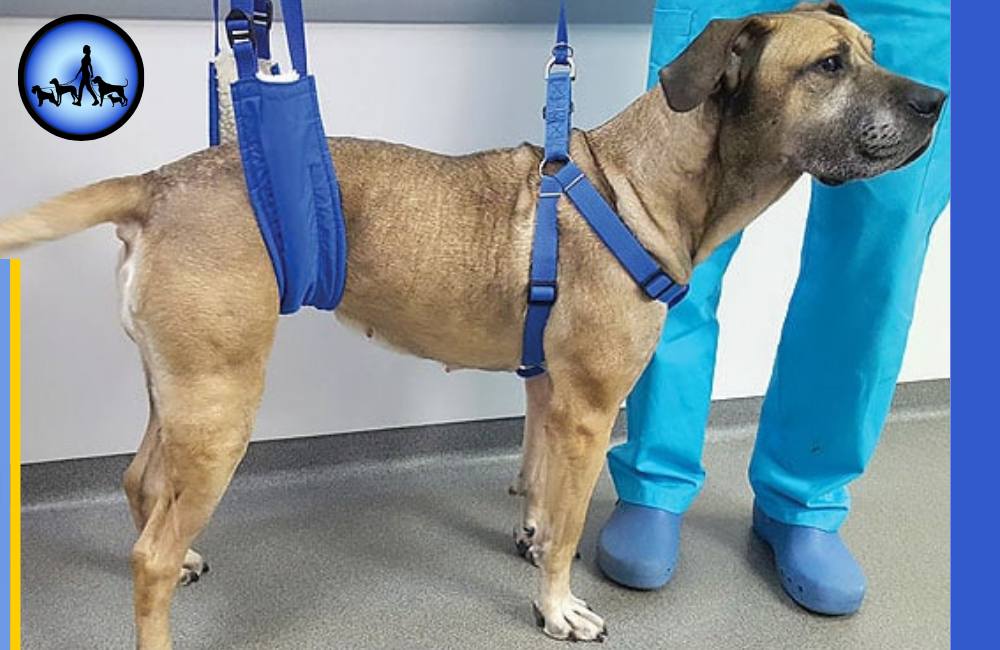Have you ever noticed that your dog limps after a long walk? Or that it has trouble jumping onto the sofa like it used to? Physiotherapy for dogs can bring significant improvement for many issues—whether age-related, post-surgery, due to injuries, or breed-specific problems. And the best part? You don't have to do it alone. DogSitting24.ch is your reliable point of contact., if you’re looking for trustworthy and loving dog care in Switzerland.
In this article, you’ll learn everything important about veterinarian-recommended physiotherapy for dogs – how it works, when it makes sense, which exercises you can do at home, and which tips are truly backed by veterinary science.
What is physiotherapy for dogs?
Physiotherapy for dogs includes targeted exercises, massages, stretches, and therapeutic techniques designed to improve your dog's mobility, flexibility, and overall well-being. It aims to relieve pain, speed up healing, and enhance quality of life—especially after surgeries or injuries. Much like physiotherapy for humans.
Individual treatment plans are created by veterinarians and certified canine physiotherapists—tailored to your dog’s age, breed, and health condition.
Why is physiotherapy important for dogs?

Despite their remarkable resilience, dogs—just like us humans—feel pain. That’s why physiotherapy for dogs is especially important, particularly for conditions such as arthritis, hip dysplasia, ligament injuries, or age-related limitations. It helps to:
- Relieve pain in muscles and joints
- Restore normal mobility after surgery
- Improve coordination and posture
- Support chronic conditions like arthritis
- Prevent injuries
- Boost your dog’s confidence and joy for life
Think of physiotherapy as a preventative, gentle method to actively support your dog’s long-term well-being.
Common conditions where physiotherapy can help
Physiotherapy for dogs is helpful in far more cases than you might think. Many dog owners only learn about it when their vet recommends it. Here are some common examples:
- Post-surgery recovery: e.g. spinal surgeries, bone fractures, or cruciate ligament tears
- Joint pain and arthritis: especially in large or senior dogs
- Hip dysplasia: breeds like German Shepherds or Golden Retrievers are particularly prone
- Neurological conditions: helping paralyzed dogs regain coordination
- Weight management: joint-friendly exercises to relieve pressure on overburdened joints
- Sport dogs: targeted recovery and preventative care for especially active dogs
Early physiotherapy helps keep your dog mobile and fit—especially in old age. And that’s true even if no serious condition is present yet.
What happens during a physiotherapy session?

A professional physiotherapy session for dogs usually begins with a thorough assessment of your dog’s posture, gait, pain sensitivity, and muscle tone. Based on this, the physiotherapist creates a customized treatment plan.
The sessions may include the following elements:
- Massage therapy: promotes circulation and relaxes tense muscles
- Joint mobilization: increases range of motion and reduces stiffness
- Hydrotherapy: swimming or walking on an underwater treadmill – gentle on joints and highly effective
- Strength and balance training: e.g. using inclines, wobble boards, or steps
- Stretching exercises: to maintain flexibility and muscle suppleness
- Ultrasound or laser therapy: supports cell regeneration and healing
And the best part: with a few treats as rewards, many dogs actually look forward to their “training sessions”!
Is physiotherapy safe for all dogs?
Physiotherapy for dogs is very safe when carried out under the guidance of trained professionals—especially for sensitive or older dogs. In fact, it is often even safer than relying solely on medication. However, it’s important to note that dogs with certain pre-existing conditions—such as heart problems or serious neurological disorders—should always be examined by a veterinarian before starting any physiotherapy program.
If you’re unsure, talk to your veterinarian. They can recommend the right intensity and appropriate methods—tailored to your dog’s individual needs.
Can I do physiotherapy at home?

Of course! Many exercises from canine physiotherapy can easily be continued at home—ideally with guidance or in consultation with your veterinarian. This helps keep your dog active and moving even between sessions with a specialist.
Here are some simple exercises:
- Sit-to-stand exercises: Similar to squats – strengthen the leg muscles
- Cavaletti poles: Stepping over low poles promotes coordination and balance
- Walking up gentle slopes: Improves strength in the hips and core
- Passive range of motion exercises: Gently moving the limbs within their natural range
- Tug games (gently!): Encourage upper body strength and make movement fun
Remember: gentleness and consistency are key. Always pay attention to your dog’s comfort—never force anything. Trust and well-being should always come first.
How often should my dog receive physiotherapy?
That depends entirely on your dog’s health condition. After surgery or in cases of serious injury, your dog may need therapy several times a week at first. For long-term maintenance, one session per week or every two weeks is often enough.
Your veterinarian or canine physiotherapist will create an individual therapy plan tailored to your dog. And remember: simple exercises at home can always help reinforce progress and support the overall effect.
Signs that your dog might need physiotherapy

Not sure if your dog needs physiotherapy? Watch for the following signs:
- Favoring one leg or limping
- Difficulty getting up, jumping, or climbing stairs
- Stiffness, especially after sleeping
- Less interest in play or general lethargy
- Noticeable weight gain or muscle loss
- Tripping or dragging of the paws
Talk to your veterinarian about physiotherapy for dogs—a gentle and non-invasive treatment option if any of these symptoms appear.
Tips to Get the Most Out of Physiotherapy
Want to get the most out of your dog’s physiotherapy? Veterinarians recommend the following:
- Start early: Don’t wait until symptoms get worse.
- Stay consistent: Progress takes time and regular practice.
- Celebrate small wins: Even little improvements matter.
- Create a calm environment: Dogs need relaxation and focus.
- Track progress: Videos or notes help you see changes over time.
With your love, patience, and support, you create the best conditions for your dog’s recovery.
Frequently Asked Questions
1. Is physiotherapy effective for dogs?
Yes, studies show that physiotherapy can relieve pain, improve mobility, and speed up healing in dogs—especially after surgery, injuries, or with chronic conditions like arthritis.
2. Can I do canine physiotherapy at home?
Yes! There are simple at-home exercises you can do between sessions—like sit-to-stand drills, stretches, or walks on gentle inclines. Ideally, these should be done under your vet’s guidance.
3. When should I start physiotherapy for my dog?
As early as possible—right after an injury or diagnosis. Dogs who start physiotherapy early recover faster and have a lower risk of long-term damage.
Conclusion
Physiotherapy for dogs is a proven, vet-recommended method to regain strength, mobility, and quality of life—whether your dog is recovering from surgery, dealing with arthritis, or simply slowing down with age.
And remember: you're not alone. DogSitting24.ch connects you with reliable, dog-loving experts across Switzerland who support you and your furry friend on the road to recovery—especially during busy days or holidays.
With physiotherapy for dogs, you’re giving your loyal companion exactly what they deserve: attention, care, and a healthy, active life.

